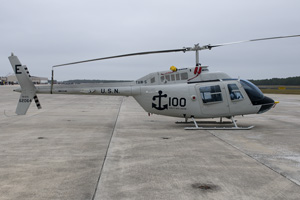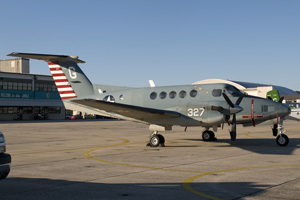CoNA
Centennial of Naval Aviation

|
CoNA Centennial of Naval Aviation
|
|
Beech T-34C Turbo Mentor 161841 (left) has been sprayed in a paint scheme which would have appeared on the 4th section leader's aircraft of the carrier USS Ranger (CV4) during 1938. The T-34C belongs to NAS Corpus Christi's (Texas) VT-27 "Boomers", part of Training Wing Four (TAW-4). The letter G on the fin points to the aircraft's current owner. At center, T-34C 164172 represents a typical U.S. Marine Corps coulour scheme of 1938. It belongs to NAS Whiting Field, Florida and TAW-5. A 1936 colour scheme for U.S. Coast Guard aircraft has been applied to T-34C 164169 seen right. Again, the fin code "E" denoting TAW-5 at NAS Whiting Field.
|

|
|
Within the U.S. Navy, the T-34C is now giving way to the Hawker Beechcraft T-6 Texan II, itself a development of the Swiss Pilatus PC.9. The Navy applied CoNA paint schemes to two of these aircraft, both being on show at Pensacola. To the left, T-6A 165966 displays the 1943 scheme of U.S. Marines VMFA-312 "Checkerboards", which at the time flew Vought F4U Corsairs. The aircraft is from Pensacola's own TAW-6. The other Texan II, T-6B 166064, wears a "Yellow Peril" paint scheme representing U.S. Navy basic trainers between 1930 and 1950. The Bell TH-57C Sea Ranger helicopter at right has been sprayed in white with an early standard naval insignia from 1914. Like T-6B "Yellow Peril" and two of the T-34C's, it is from the very prolific TAW-5 at NAS Whiting Field. One of the Wing's squadrons, HT-8 "Eightballers", signed for this scheme.
|
|
|

|
|
USS Enterprise (CV6)'s colours of 1942 have been applied to this Rockwell T-39N Sabreliner 165523 from TAW-6 seen left, while the Beech T-44A 160984 from Corpus Christi's TAW-4 wears the colours of a Curtiss NC-4 that in 1919 was the first aircraft to cross the Atlantic Ocean, albeit not non-stop. To the right, a Beech TC-12B from VT-35 at Corpus Christi in a standard tactical paint scheme at the time of the Battle of the Coral Sea. May 1942.
|

|
|
A typical 1943 tactical paint scheme was applied to F/A-18C Hornet 163733 of VFA-122 "Flying Eagles" from NAS Lemoore, California. The colours on the F/A-18F Super Hornet (center) are a tribute to the service of U.S. Navy enlisted personnell. The camouflage pattern on their combat clothing has been used on this aircraft 165677. The jet also belongs to VFA-122. Finally, the Lockheed P-3C Orion 161591 pays tribute to "Strawberry 4", a Consolidated PBY-5A Catalina from VP-44 "Golden Pelicans" that spotted the Japanese fleet just prior to the Battle of Midway, 3 June 1942. It belongs to NAS Jacksonville's Patrol Wing 11 (PATWING 11). Most of these pictures were shot at NAS Pensacola, Florida on 11 and 12 November 2011. Only the P-3C and the TH-57C were photograhed at NAS Jacksonville, Florida on 6 November 2011.
Thanks go to Mrs. Miriam Gallet (PAO NAS Jacksonville), Mr. Patrick Nichols (PAO NAS Pensacola). |
All pictures (c) Hans Rolink